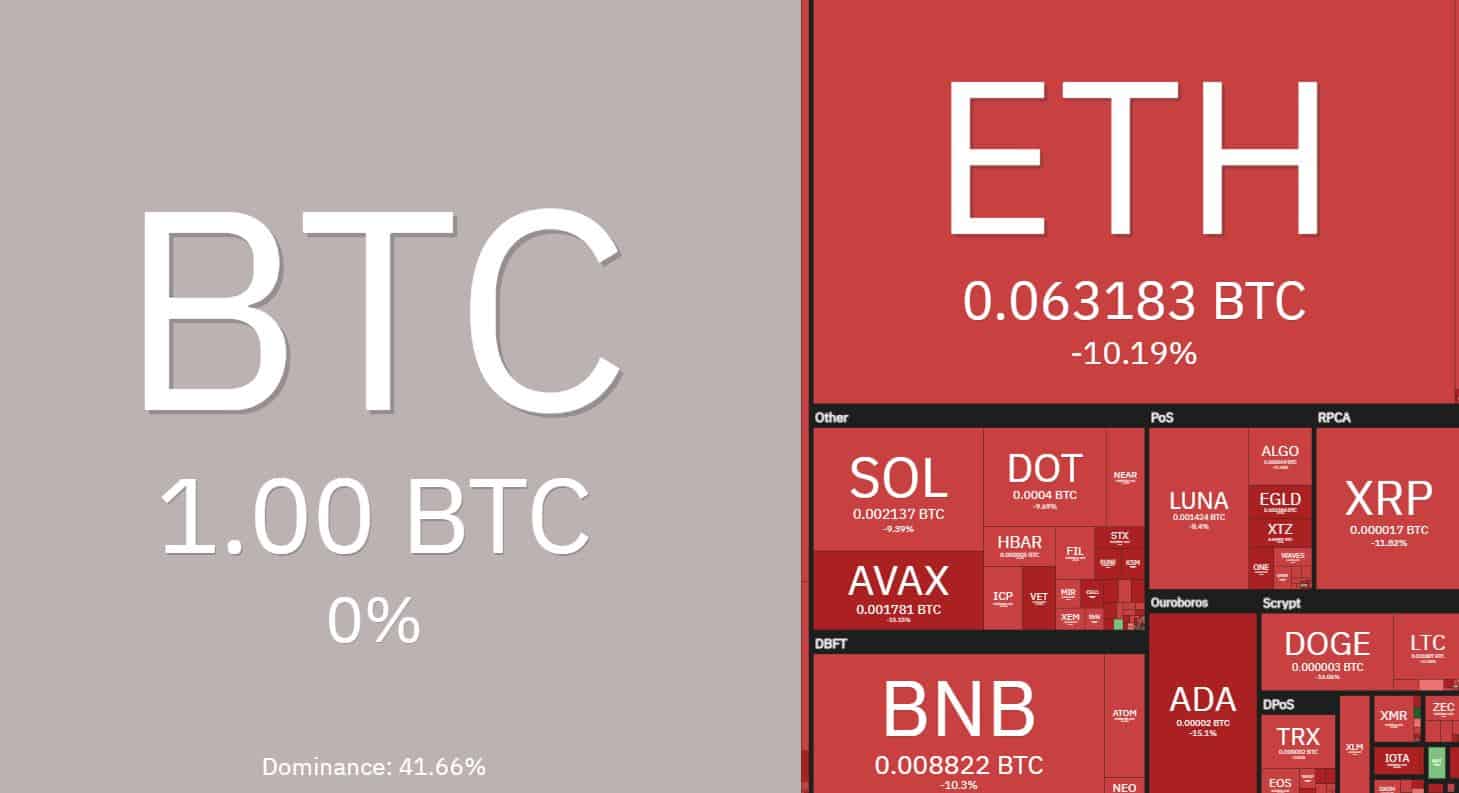The past couple of months have been challenging in the cryptocurrency market as many coins, including Bitcoin, lost substantial chunks of their dollar value.
While the primary cryptocurrency is down about 50% since its November all-time high, many altcoins are crashing harder. This became even more pronounced in the context of the tensions between Ukraine and Russia, which ultimately resulted in a war between both countries.
Altcoins Crash, BTC Dominance on the Rise
Bitcoin’s price is down about 8.2% in the past 24 hours, currently trading at around $35,5K but having charted an intraday low at around $34,000.
And while this is definitely a massive decrease in such a short period of time, altcoins had it much worse. This is a heatmap displaying their losses against BTC during the last day:
As evident from the above, altcoins are down massively when trading against Bitcoin, demonstrating that they’re clearly having a worse time right now.
This has also led to an increase in Bitcoin’s dominance – a metric that tracks BTC’s share relative to that of the entire market. It currently sits at around 42.4%, up almost 1% in the past day alone.
Why Do Altcoins Crash Harder Than BTC?
In the context of what’s currently happening between Russia and Ukraine, it’s important to note that this is the first open war in Europe in the past almost 80 years. Experts are forecasting serious economic consequences for economies across the board, and it’s hard to predict when and where the tension might end.
With this said, during times of economic turmoil and uncertainty, risk assets tend to perform poorly. These assets include stocks, company shares, and, of course, cryptocurrencies. Bitcoin is the market leader and the most broadly-accepted digital asset and has historically proven to be the safest as well. Still, BTC is considered a massively risky asset for participants in traditional finance.
Now, altcoins are on a completely different level. They are incrementally riskier than BTC, and is perhaps relatively safe to assume that investors would unload them with priority.














